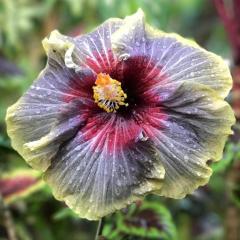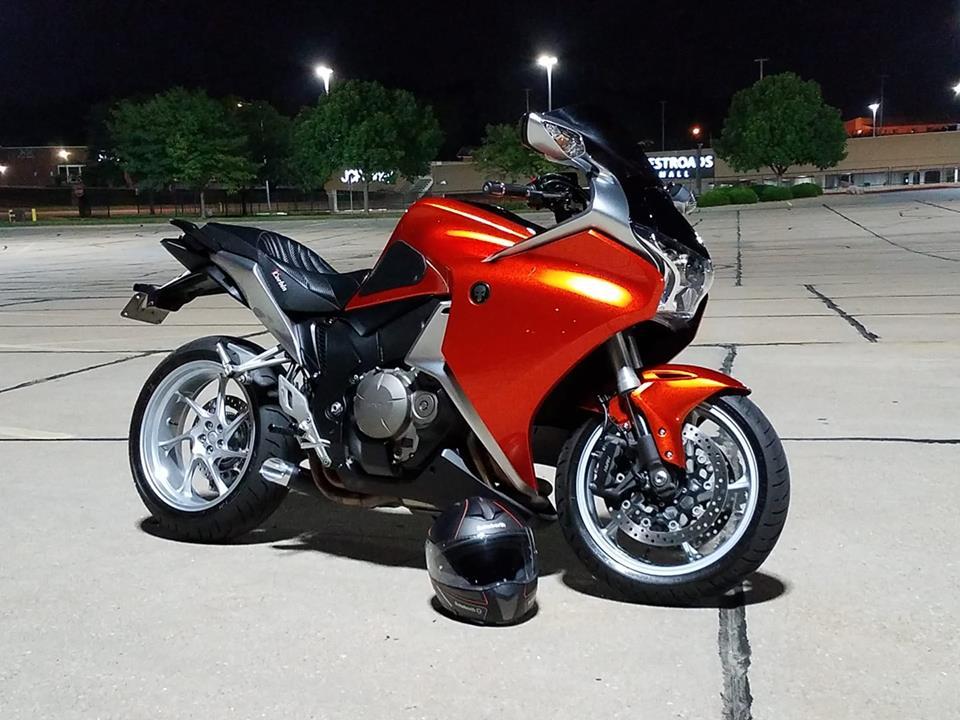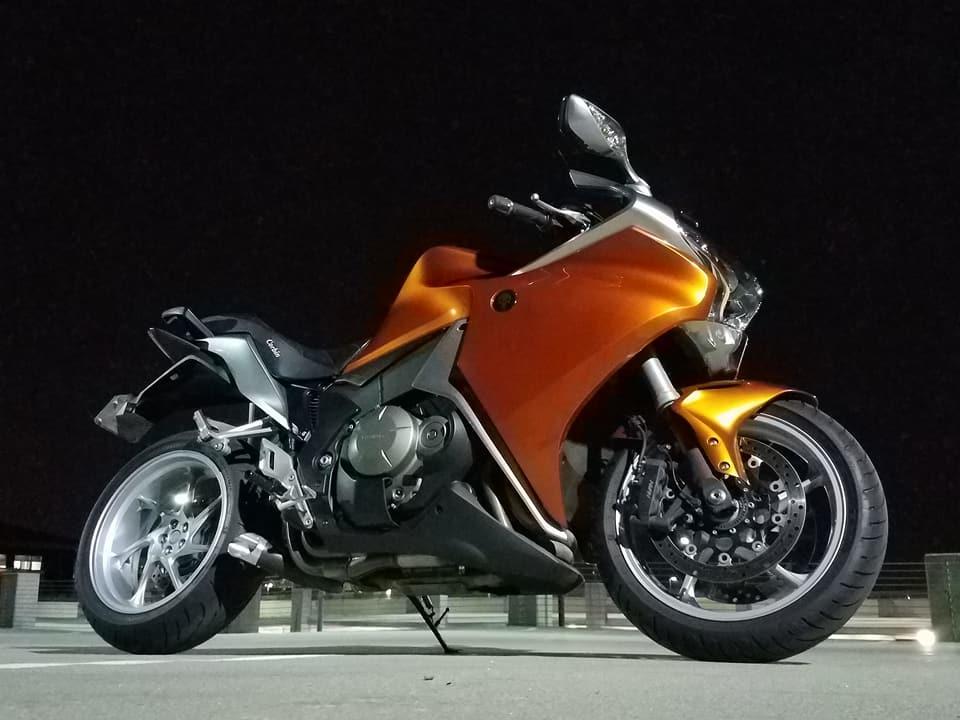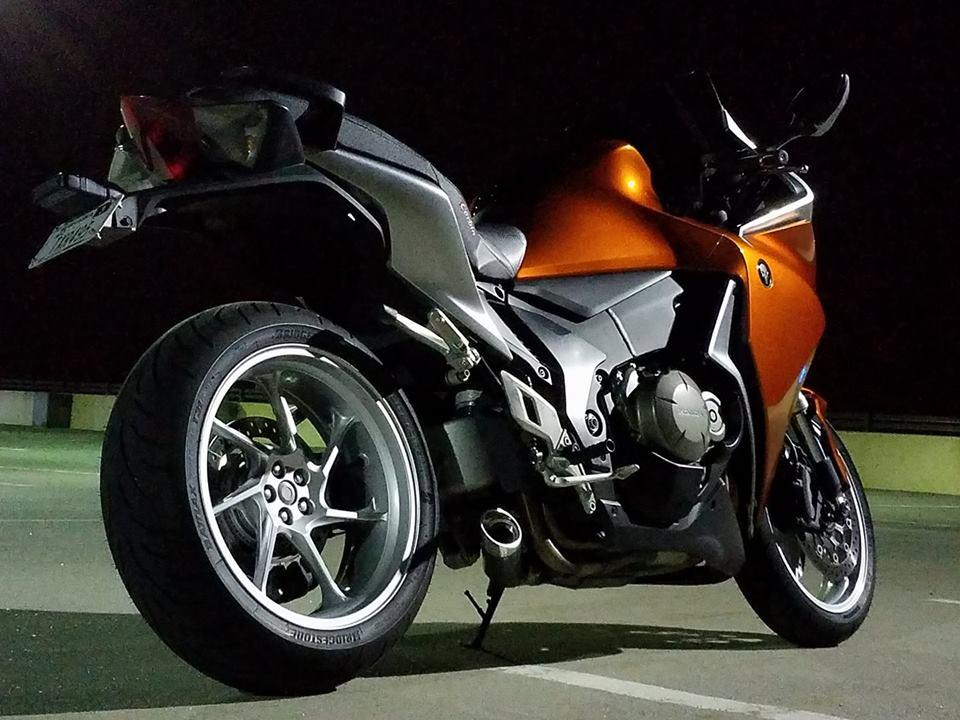-
Posts
29 -
Joined
-
Last visited
Megadan's Achievements
-
Hey, another Nebraskan with a Viffer! Congrats on the new bike.
-
Even being a wet clutch system doesn't mean it warrants more frequent changes. You would be amazed at the difference in oil life in regard to clutch material contamination is in different conditions. On my little 230 air cooled enduro the simple addition of a small oil cooler made a dramatic difference in the level of clutch material found in the oil - effectively doubling it. Being air cooled and having a 1.2 quart capacity means that the oil sees a lot more abuse and suffers from greater thermal breakdown - and suffering from decreased viscosity - which is why it's oil change intervals are a measly 500 miles. With the oil cooler I found I could stretch that out to almost 1000 miles and the oil was in better condition at that point than it was at 500 miles before doing so. Heck, Honda's own recommended oil change interval is 8000 miles and the 1200 came from the factory with plain jane mineral oil. The same basic rules apply to the type of oil. Group 5 oils, by their nature being much more resilient under extreme conditions, will actually last longer and reduce clutch wear since they suffer from a much lower rate of viscosity and lubricity loss at those extremes. As I mentioned before, I can feel the difference in the way the bike runs and shifts. That includes the way the clutch feels and reacts during hard acceleration once the bike is hot. The clutch engagement is just smoother between gears and even taking off from a stop. Hard to describe really, but it just is. Keep in mind that this is the first time I have tried Motul 300V. I am not wearing rose colored glasses nor do I have some weird sense of brand loyalty or some sense of superiority. I run Rotella T4 in my Enduro, and I also ran it in my GL1000. You can't get any more basic than T4 in regards to motor oil.
-

Most performance from suspension upgrade
Megadan replied to srdjan's topic in Seventh Generation VFR's
I have the OEM panniers. You might be able to have the Werkes altered to function with the panniers. From what I know, the biggest issue is that it aims directly at the right pannier and can potentially melt the plastic. I also ran into the same issue with trying to e-mail Guhl. The first time around I received no response from them, but the second time I e-mailed them I did get a reply. You might also try calling them, although being an international call could be quite pricey. I would say to send them another e-mail. My biggest issue with the suspension is the same with most bikes as they come from the factory. I am a bigger rider than most motorcycles are generally sold for (1.9 meters tall and 117kg) so I have to often have new springs and valving done on every bike I buy. I do agree that Honda seemingly made a strange decision in fitting such generic suspension to the VFR given it's price point and it's very sport focused nature. It would not have been too hard for them to fit a variation of the same forks used in the CBR1000R, but instead decided to go a different route. I can only assume their thinking was that the VFR was a street bike and it did not need as much of a track oriented setup.- 33 replies
-
- suspension
- ohlins
-
(and 2 more)
Tagged with:
-
Would it surprise you to know that I use it to get to work almost every day, as well as run errands? She is not a garage queen by any means... I am just obsessive about keeping my bikes clean lol.
-
It's a "to each his own" kind of thing. I normally agree with you, and for the most part you aren't wrong. I bought the $60 gallon of Motul 300V simply because I was curious as to the difference. Being a Group 5 synthetic, in this case using two different Esters as the base stock, it offers the best thermal stability (withstands high heat better without breaking down) and better molecular strength at those higher temps (shear and compression resistance) as well as a higher and more stable detergency. In simple words, it holds up better and for longer under extreme conditions, which is why it is generally run in racing applications. For most street riding, this means it is somewhat overkill. I am a believer in overkill, if for no other reason than I can be pretty harsh on my bikes (in my eyes at least) and I want to give them what I feel is the best protection I can. Is it 3 times better? I couldn't be the one to tell you. I guess it depends on what we are considering better in the end. All I know is that it performs much better than the cheaper oils I have tried once things are hot and my heavy right hand comes into the equation. In the end, do what you do. I am not going to sit here and preach to you on what the best is and that everything else is "bad." As mello dude's little joke said, the most important thing is that the oil is "clean."
-

Most performance from suspension upgrade
Megadan replied to srdjan's topic in Seventh Generation VFR's
Thank you. I do absolutely love the look of my bike with the Coffmans shorty. So far it has held up fine, but only time will tell if the black finish lasts or not. The polished tip is a royal pain to keep looking nice due to where it is located. The second you drive through any sort of water it gets splashed and the grime cooks right on to it. It only takes a minute to polish back up, but it is annoying if you are obsessed with having a clean bike like me. I actually would have purchased the Werkes GP exhaust, but the fact that it does not work with the panniers, which I have, was the only reason I did not pull the trigger. I would wager a guess that the Coffman's shorty and the Werkes GP exhaust are close to the same in regards to how loud they are. The Coffman's does come with a silencer that can be "tweaked" a bit. The "db killer" it comes with is 2 parts, an outlet reducer with a perforated baffle riveted to it. In that form it is the quietest, but sounds kind of strange at low engine speed (makes a puffing kind of noise", but at mid level and higher it makes a very tolerable tone that is not overly loud. What I did was drilled out the two rivets and removed that perforated baffle and just run the reducer on the end. This made it louder obviously, but still quieter than with the silencer fully removed. It is just enough to remove the drone in my helmet when I cruise along around 4000rpm. With the silencer removed it is fairly loud. I wouldn't call it obnoxious, and it sounds amazing, but people will know you are coming. As mentioned before, with the silencer removed the exhaust note right around 4000rpm can drone a little. With ear plugs in this isn't too much of a problem, but you will still hear it. It is just something about that rpm point that hits the right frequency. One other side effect of the Coffman's shorty is that since it is so short, it loves to pop and crackle on decel, below 6000rpm (you can tell the ecu is adding a little fuel when you dip blow that RPM point) and gives a little pop on upshifts if you are getting on the throttle more spiritedly. I personally like it, so it really boils down to the rider. As far as suggestions. The two biggest mods that I think anybody should do to their 1200 is getting the suspension sorted out and having the ECU flash tuned. The transformation on my bike is hard to put into words. The suspension rates the highest by far. I went from having a bike that felt almost unsteady in the corners and bounced around like an old Cadillac to something that feels planted to the road all the time, at any speed, in any conditions. I went from having a bike that I felt I could out-ride easily to one where I have to actually work harder because I don't have the skills to use it to it's full potential. The ECU Flash tune, while not necessary, makes a good difference in all the right ways. It's not going to overly impress you with extra power, although with bolt on upgrades like an exhaust you will get some power to be sure. It's the subtle differences in how the bike responds at lower revs that really makes the difference. Throttle on is smoother and the engine pulls seamlessly through all RPM's in any gear. If I find myself in 6th gear at 3500rpm, a small twist of the wrist and it just pulls without hesitation, where before I found myself often clicking down a gear. For the ultimate experience, have the gear restrictions removed means you have full power in every gear. Not necessary, but why not? Depending on where you live there are two options for having this done; Guhl is the most well known and located here in the U.S. and he even caters to owners from Europe and elsewhere. His turn around times are impressive, and I don't think I have yet seen one negative review from a 1200 owner. In the U.K. there is Hilltop. I don't know as much about them, but a few owners have their bikes tuned by them and have only had positive things to say. Do those two things and you will have a ballistic missile of a bike when you want to use the "Sport" side of it's Sport Touring design, and yet still have a bike you can load up and take on a trip, or use around town as a commuter. I had everything re-worked because, as my name implies, I am not a small man. At 6'4'' tall and 260lbs, there are not many bikes with suspensions designed to properly handle my mass lol. For me it wasn't a matter of desire so much as one of necessity. The factory spring rates and valving were just not enough to handle my mass unless all I wanted to do was ride gently and slowly...which is not what I wanted from this bike. If I wanted that, I would have bought another Goldwing. On the other end of the spectrum though, I am not the most experienced sport bike rider, so spending thousands on Ohlins stuff would honestly be a waste for me. I do like to ride it like a sport bike, but I am also not looking to be a track day hero and living in Nebraska means that there aren't too many canyons to carve. For my skill level and purposes, having the factory stuff setup to be the best that it can be with my big butt in the saddle seemed the most economical and logical course to follow, and I am not disappointed in the result. Somebody with more skill and experience could probably find a way to critique it, but from where I stand this bike is a monster.- 33 replies
-
- suspension
- ohlins
-
(and 2 more)
Tagged with:
-

Most performance from suspension upgrade
Megadan replied to srdjan's topic in Seventh Generation VFR's
Just my 2 cents, so take it as you will. Obviously the Ohlins stuff is going to be well worth the money if you can afford to do so, so this is in no way talking any of that stuff down. That said, if you can find somebody that can upgrade the factory components, you would be amazed at how well your bike will handle. I sent my forks and rear shock off to Daugherty Motorsports here in the U.S. New valves, shim stacks, and springs in the forks as well as the rear shock rebuilt, re-valved, and a new spring, all of it setup for my weight, the bike, and how I want to ride it. Cost me less than $800 U.S. and for the dollar was the best money I have spent on my 1200. If you can locate a shop capable of doing this type of work, you won't be disappointed. No, I don't have the level of adjustability of an Ohlins setup, but Aside from tweaking the rebound dampening and dialing in my preload a little bit, I have not found myself needing it for the type of riding I do.- 33 replies
-
- suspension
- ohlins
-
(and 2 more)
Tagged with:
-
-
I just did an oil change today on my 1200. When I got the bike I did an oil change right away even though the oil in it didn't look too terrible. I went with the same Pro Honda HP4S oil as you did and an OEM Honda oil filter. It was a great oil, but I noticed that once the weather here shifted into the high 90's, my bike was a bit less smooth - at idle and shifting once I had been riding for a little while. Today I just changed out for a more expensive oil option after just 2000 miles, as well as a filter change again (a waste I know, but think what you will.) I am now using Motul 300V Double Ester 10w40, and the difference in how the bike performs is rather astounding. I guess it better be for almost double the price. ($60 for 4L). Now, if this is down to the oil itself being more "slippery" or stable at higher temps like it is supposed to be, or simply due to the 40 weight "hot" viscosity is another question all its own, but there is a very marked difference, especially shifting. If the previous oil had more miles on it, then maybe I could chock it up to that, but I find it highly unlikely that it was any worse for wear with just 2k miles on the clock.
-
I noticed that you mentioned the heel plate (foot peg bracket) is getting too hot to touch. Bear in mind that the rear header pipes are right behind that side. My bike is always hotter on the right side because of this. I have even taken infared temp readings of my engine case in various spots after a hard run around town (bike at idle) and found very little difference in engine case temps or cylinder temps. I supposed you could do something similar to know for sure. The other option would be to contact your local Honda dealer and provide them with the VIN number for the bike to see if it is one of the affected motorcycles in their recall.
-

How hot is your Swing-arm/Final Drive?
Megadan replied to darkcider's topic in Seventh Generation VFR's
It's been consistently in the mid-high 30's (C) or mid 90's to 100F range where I live, and my ride to work is roughly about the same duration, 90% highway at 70mph/112kph. My swing arm and final drive are usually hot enough that you can touch it for a few seconds and it would be uncomfortable, but nowhere near hot enough to burn me. Final drive has Redline Synthetic "light shockproof" 80w90 gear oil with maybe 2k miles on it. Now, if I ride to work with my hair on fire (lots of hard acceleration and braking) then it can get pretty darn hot, but that is to be expected. -
I went ahead and dropped the cash on the Knight Designs pegs and a few other goodies as well. TechSpec Tank grip pads and the OEM Honda tank pad also going on and a different style of lever. It's so strange owning a bike I don't feel the need to modify a lot to get it how I want it. I got all artsy feeling and tried to get a couple of dramatic night shots in. Not my best work, but not my worst either.
-
Guhl doesn't have a specific flash for any particular exhaust with exception to maybe the DAM system. When I called them I told them I had a "high flow" air filter and Coffman's shorty on it, and they basically said they just tune all slip on's the same. I can only assume that, no matter how good a slip on flows, the stock catalytic converter can still only flow so much, and they just tune around that instead. I have had no evidence of it being lean, and it runs more or less the same with or without the silencer installed at least in the lower RPM ranges. The Coffman's is prone to popping (and a little flame spitting) due to it's length and location, and I know I have the joint sealed perfectly. You can tell when the ecu turns fueling back on below 6000rpm when engine braking because of it. Other than telling them about the intake and exhaust, I had the restrictions removed from 1st 2nd, and 6th. I kept the rev limit stock as I see no need to stretch another 500rpm out of the engine. With the restrictions removed, I have managed to get the front wheel to come up in first and second. We aren't talking about massive wheelies, but a couple inches off the ground. Something it never would have done before, even with trying. My fuel economy is unchanged as well, with averaging around 34-37mpg under my normal riding conditions, with a best of 43mpg on a strictly highway run at 65-70mph and no heavy handed acceleration and a worst of 28mpg during a few runs through my favorite roads with a couple of friends. The changes with the reflash that are most notable are actually the most subtle. The bike is just smooth at any RPM. I can take off from a light and never go above 3000rpm and it just pulls me along. If I tried that before the reflash, the bike was very "herky jerky" and very rough feeling. I normally don't ride that way, usually keeping the bike at 3500rpm or higher since that is where it seems happiest, but it is something worth noting. I can also idle along in first gear and the bike just rolls along, no bucking or jumping of any kind.
-
The Coffman's exhaust guy would be me. Previous to that my bike had a Two Brothers system. There are two questions that should really be addressed to determine what exhaust you should run. 1. Do you want to run the factory panniers/luggage? If so, this will limit your selections a bit. 2. What is your sound level tolerance? Are you a "loud pipes save lives" enthusiast, or would you rather have something with a bit of stealth mode? The only reason I bought the Coffman's was to try it out for myself. I was actually going to purchase the DAM exhaust, but figured I would give this a try first. The Two Brothers system that was on my bike when I purchased it looked ugly, the clear coat was almost gone from the carbon fiber, and it simply had to go. I absolutely loved the look of the Coffman's shorty after seeing it on another 1200 that had installed the pre-production version. At $230 shipped to your door, it's not a huge investment. It comes with a silencer setup, and believe me it works after trying it without the silencer installed today. Even with the silencer though, it's still on the loud end of the spectrum, but not obnoxious. I am planning to try and get some sound clips of it with the silencer installed and removed this coming Friday if the weather holds. It sounds amazing without the silencer though. My neighbors will likely start hating me lol. IMHO The DAM exhaust is probably the best exhaust made for these bikes in terms of function and style. It works with the luggage, looks great and matches the lines of the bike perfectly, with the DB killer out it makes a great noise without being too loud, and with it in is actually quieter than the stock system, while also performing better. As far as the exhaust flapper solenoid, you have two options. The cheap and easy way is an exhaust valve eliminator like the Servo Buddy for $60. The more expensive way is to have a flash tune done to your ECU. The flash tune has other benefits as well beyond the solenoid elimination obviously. I had mine done by Guhl, and aside from my suspension being setup by Daughtery Motorsports, was the best investment I could have made. Reflash will cost $375 with overnight return shipping included in the price. They are fast on the turn around too. I mailed mine off on a Friday, got a call from them Monday, and got it back Wednesday. If you haven't seen my thread on the Coffman's exhaust, this is it. Scroll down to the third post to see pictures of it installed on my bike from 3 different angles.
-
Thank you. I can't take credit for the paint job, but that is what attracted me to it. I love Pearl Metallic oranges. I can take credit for a better looking exhaust and proper suspension at least lol. The bike doesn't sink under it's own weight now.






